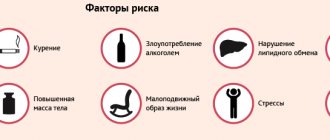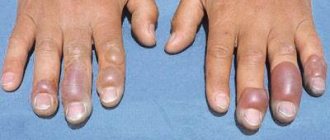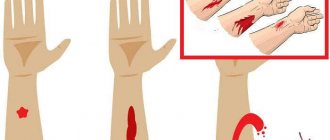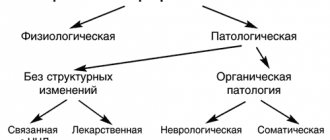Electric shock is the cause of contact with an electrical circuit from sources of voltage or current that can, through a part of the body that has become energized, cause the flow of current. The human body typically responds to current levels greater than 1 mA. It is possible to receive an electric shock at high-voltage installations, or near them, without contact with live elements, but due to current leakage during the formation of an electric rainbow.
The level of damage to a person depends on many factors: the power of the discharge, the nature of the current, the condition of the person (moisture of the skin, clothing), terrain, as well as the path of the current through the body.
Peculiarities:
- The absence of visible external indicators of the impending danger of electric shock (current is something that is invisible and inaudible, it cannot be detected in advance and prevented).
- Level of complexity of injuries after electric shock (multiple burns can affect capacity and standard of living, or lead to death).
- When a person enters the affected area with an electric current of industrial frequencies of 10-25 mA, muscle tissue convulsions may occur, and therefore the person’s capacity is limited, and he cannot free himself from the influence of the current without outside help, since he is chained to the parts affected by the current.
- Involuntary contractions of muscle tissue may be caused due to the interaction of external current with the biocurrents of the human body.
Electric shock entails the possibility of mechanical injury (contact and exposure to electric current at height can lead to loss of consciousness, falling, and injury).
General information
Electrical injury is a dangerous household/workplace accident and is associated with high mortality.
Electrical injuries include both lightning and mains electric current. Electrical trauma means general (functional changes in the respiratory/cardiovascular systems, central nervous system) and local physical damage to the body caused by exposure to electrical energy that exceeds the body’s tolerance threshold in its strength. Electrical injury code ICD-10-T75.0 (Lightning) and T75.4 (Exposure to electric current).
Electrical injury occurs when:
- Connecting the injured person to the electrical circuit.
- When current passes into the ground through the body of the victim.
- From the influence of induction current.
The rapid growth in the number of electricity sources is due to the development of scientific and technological progress and, on the one hand, increases the level of comfort and quality of life, but on the other hand maintains the stability of the frequency of electrical injuries. Thus, the proportion of electrical injuries among injuries of various origins is about 2-3%, however, despite the relatively small rates, electrical injuries are a common cause of disability and death, which puts them in one of the first places in terms of importance. The figure below shows statistical indicators of the severity of electrical injuries.
The main causes of death are: cardiac arrest (due to fibrillation), paralysis of the respiratory center and respiratory arrest, shock , or various combinations of these causes. How correctly first aid is provided in case of electrical injury is also of great importance.
Electric shock is more common in males of working age whose professional activities involve electricity (electricians, workers, builders), as well as in children and adolescents who do not have sufficient knowledge or are not aware of the dangers of current, as well as due to careless handling of electrical appliances .
Electric current, as a damaging factor, has a number of features that determine the danger of electric shock:
- Cannot be detected by the senses before its effect on the body. That is, it is impossible to determine the presence of voltage without special devices.
- Capable of being transformed into other types of energy (mechanical, electrochemical, thermal and biological effects), causing thermal, mechanical, and chemical damage.
- The damaging effect of electric current manifests itself not only in direct contact with the source, but also through various objects, discharge through air/ground.
- The damaging effect of electric current extends along the entire path of its passage through the human body.
- Frequent discrepancy between the severity of the injury and the duration of exposure to electric current.
The effect of electric current on the human body is heterogeneous. Accordingly, the severity and nature of electrical injury depends on a number of factors.
Main Factors Affecting the Severity of Electric Shock
Type, strength and voltage of electric current
Alternating current is more dangerous (up to 500 V) than direct current. At the same time, the damaging effect of alternating current depends on its frequency: low-frequency current (up to 60 Hz) is more dangerous than high-frequency current. The threshold for the strength of direct current perceived by the body is 5–10 mA, and the threshold for the perception of alternating current used in everyday life (60 Hz) is 1–10 mA.
When exposed to a current of 0.05–0.1 A, instant death occurs, however, in some cases, fatal injury can be caused by a current of lesser strength. When the body is exposed to a current of 15 mA or more, a convulsive muscle contraction is observed, which prevents the possibility of interrupting a person’s contact directly with the current source. The upper limit of the so-called “releasing” currents, at which independent (with difficulty) separation from the current source is possible with dry hands, is 10 mA, and with wet skin of the hands - 13.5 mA.
The “chaining” effect of electric current significantly increases the duration of its action on the body and the severity of the electrical injury.
There is also a distinction between low voltage (up to 1000 volts) and high voltage (if this indicator is exceeded). At the same time, a person can be shocked by high voltage current even in the absence of direct contact with the source (voltage arc, step voltage). Low-voltage burns mostly refer to household electric shock. Damage through arc contact is extremely favored by a humid air atmosphere.
In general, with a similar duration of exposure, electrical injury is more severe, the higher the current power and voltage. At the same time, low-voltage current (110-220 V) predominantly causes tetany ( muscle spasm ), and high-voltage current causes more severe damage (deep burns). Below is a table giving an idea of the nature of human exposure to alternating/direct current.
Paths of electric current (current loops) through the human body
High voltage current travels along the shortest path, while low voltage current travels through the human body (from entry point to exit point) along the path of least resistance (through tissues with relatively low resistance). The resistance of different tissues in the body varies significantly, which is due to the specific gravity of the fluid present in them.
The nervous system, mucous membranes, blood and muscles have minimal resistance. Dry skin has average resistance, while cartilage, fat and bone have high resistance. However, tissue resistance may vary depending on personal characteristics and objective circumstances. For example, thick, dry skin has significantly greater resistance than moist, thin skin.
There are various options for "current loop". The most dangerous is a full loop (both arms and both legs), since the current in this embodiment passes through the heart. The least dangerous is the bottom loop (from leg to leg). The most common variants are “hand-to-hand”; "arm-legs"; "leg-leg"; "head-legs"; "head-hand". The figure below schematically shows the various current loop options.
Duration of contact with a source of electricity
The dependence is directly proportional: the longer the current, the more severe the electrical injury and the higher the risk of death. This is due to an increase in the probability of current passing through the heart at the time of the T-cardiac cycle phase and the occurrence of fibrillation, which determines the outcome of electrical injury.
Physiological state of the body
The effect of electric current on a person is largely determined by the physiological state of his organs and systems, especially the heart muscle and nervous system. The danger of exposure to electric current on a person increases when the body is overworked, exhausted, during fasting and when the body overheats. Also, people suffering from chronic diseases are more sensitive to electric current.
Environmental factors
In addition to the above, it is necessary to take into account other factors that influence the outcome of electrical injury, the main of which are environmental conditions (air humidity, temperature, the presence of conductive dust, etc.). That is, in damp/damp rooms, as well as at elevated ambient temperatures, the conductivity of electricity increases significantly.
First aid to the victim
First aid to an electric shock victim consists of eliminating human contact with the current source and restoring the vital functions of the body (breathing and heartbeat).
Sequencing:
- De-energize the electrical circuit by turning off the power source, and if impossible, use improvised objects that do not conduct current (wood, fabric products).
- To approach the victim, you need to protect yourself by wearing shoes with rubber soles on your feet and rubber gloves on your hands. Move only on dry surfaces.
- Drag the victim to a safe area (at least 10 m), without touching open areas of the body.
- If a person is unconscious, check for pulse and breathing, airway patency (presence of foreign bodies). If there are none, provide primary resuscitation care until signs of life appear or an ambulance arrives:
- mouth-to-mouth artificial respiration;
First aid for electric shock - indirect cardiac massage.
- If the patient does not regain consciousness, but shows signs of life, he should be placed on his side and wait for the ambulance to arrive.
- If the person is conscious, bring him to his senses with a light pat on the cheeks, ask basic questions, check the pulse. If there are burns, apply a dry bandage and give pain relief until the ambulance arrives.
Types of electric shock
Among the various variety of types of electric shock to the body, it is customary to distinguish:
- Local damage to tissues and organs (electrical injuries).
- General (electric shock, shock).
Electrical injuries . These include mainly electrical burns, which are caused by heating of human tissue by the current flowing through it (due to the transformation of electrical energy into thermal energy). Their intensity varies widely: from minor burns of the skin and subcutaneous tissue at the entry/exit points of the electric current to damage to deep-lying tissues and even charring of areas of the body and limbs with severe lesions.
However, most often burns occur in the form of current/electric marks, representing areas of dry necrosis of a round/oval shape, pale yellow in color, sometimes with a roll-like elevation at the edges. Less commonly, detachment of the epidermis in the form of blisters is observed, painless without liquid contents. Hair in the area of electrical marks, as a rule, retains its structure, but at the same time twists in a spiral.
Sometimes other types of electrical injuries occur - electrometallization of the skin , which is the impregnation of the surface of the skin with metal particles when it evaporates/sprays under the influence of electric current. The color of the affected area is determined by the color of the specific metal that gets on the skin, and the skin itself acquires a rough surface.
With a deep burn, necrosis spreads to deeper tissues - tendons, blood vessels, muscles, bone tissue, which determines the severity of the electrical injury. Due to partial death and thrombosis of blood vessels after exposure to current, subsequent expansion of the necrosis zone with bleeding is possible.
Electric shock . It is formed as a result of excitation of living tissues by electric current and is characterized by involuntary convulsive contraction of various muscle groups. It can occur without or with disturbances in cardiac activity and breathing against the background of full consciousness or its loss.
Electric shock is an extremely severe neuro-reflex reaction to irritation of the body by electric current.
It is characterized by profound disorders of the cardiovascular, respiratory, nervous and other body systems. The state of shock can last from several minutes to a day and, as a result, there is a high probability of biological death.
Which doctor deals with electrical injuries? Diagnostics
A patient in shock who has suffered deep tissue injuries is sent to the intensive care unit or intensive care unit.
Treatment of minor burns in victims without signs of shock is carried out in the surgical department, and in the absence of lesions - in the general therapy department.
In this case, the person must remain under observation for 2–3 days until a complete picture of the state of health is obtained and the necessary diagnostic measures are carried out. Therefore, the treatment of electrical injuries, depending on the situation, is carried out by an anesthesiologist-rheumatologist, traumatologist, surgeon, therapist, neurologist, cardiologist, and ophthalmologist.
Diagnosis of electrical injuries includes:
- collecting anamnesis and drawing up a general clinical picture;
- ECG to assess the functioning of the cardiovascular system;
- radiography, CT and MRI to detect organ injuries, bruises and fractures.
Pathogenesis
Electric current, passing through various tissues and organs of the body, has both specific and nonspecific effects (mechanical damage, burns as a result of clothing catching fire and the victim falling). The specific action is due to the mechanical, electromechanical, and thermal effects of electric current that occur when current passes through various tissues of the body.
The mechanical effect of the current is caused by the passage of a high-density discharge through the tissue, which causes tissue delamination/rupture. The electrochemical action leads to a sharp polarization of cell membranes, which causes a change in the direction of movement of ions and, as a consequence, swelling of colloids, coagulation of proteins and necrosis .
Electric current, when passing through the victim’s body, causes a sharp excitation of smooth and skeletal muscles, nerve receptors and glandular tissues, resulting in the development of pronounced tonic convulsions, cardiac arrhythmias, arteriolospasm with organ hypoxia .
The impact of electric current on the central nervous system and peripheral nervous system leads to the development of functional-dynamic disorders, which can subsequently lead to persistent structural changes. In case of severe electrical injury, there is a high probability of developing a coma.
The immediate cause of death at the time of electric shock is most often: irreversible ventricular fibrillation, spasm of the coronary vessels; with damage to the medulla oblongata - respiratory arrest of central origin; respiratory arrest caused by tetanic spasm of the respiratory muscles; electric shock with a fatal outcome as a result of cardiac dysfunction.
Classification
The classification of electric shocks is based on various signs.
Based on the severity of the body’s reaction, there are several degrees of severity:
- Mild (I degree) - characterized by convulsive contractions of skeletal muscles with preserved consciousness.
- Moderate (II degree) – characterized by cramps of peripheral muscles accompanied by a short-term loss of consciousness.
- Severe (III degree) – impaired breathing and cardiac activity against the background of prolonged loss of consciousness.
- Extremely severe (IV degree) – a state of clinical death.
- According to etiology, there are: alternating electric current damage; direct electric shock; lightning strike.
- By the nature of the violations: local electric shock) and electrical injury.
- By occurrence: household; production
The effect of electric current on the human body
The effect of electric current on the body can be either therapeutic, used in physiotherapy (electrophoresis, darsonvalization, galvanization, electrical stimulation), or traumatic.
The negative impact on a person as a result of electric shock is expressed as:
- thermal injuries - burns of the skin and internal organs from heating due to electric shock, accompanied by the death of the affected tissues, damage to nerve fibers and blood vessels;
- mechanical impact - ruptures of muscle tissue with a sharp contraction of muscle structures under the influence of an electrical discharge;
- electrolytic influence – a violation of the structure and properties of fluid in the body (blood, water, lymph), which changes and decomposes into ions under voltage;
- biological impact - a change in the biopotential of body tissues caused by an increase in the excitability of body cells;
- light exposure - damage to the structures of the eye under the influence of the release of a large flow of ultraviolet radiation during an arc discharge.
Causes
Most electrical injuries occur at home during direct contact (touching) with various electrical conductors energized at 220 volts. As a rule, such sources are uninsulated electrical wiring or faulty household electrical appliances, sockets, lamp sockets, and switches.
Frequent reasons are violation of safety rules (ignoring protective equipment) during installation/construction work. Less commonly, electrical injury is caused by exposure to high-voltage (AC/DC) current when people enter electrical substations and climb power line supports. Sometimes the reason is the accidental contact with voltage in places where it was not initially present or the occurrence of voltage on the body of equipment/equipment, under normal conditions to which it is not supplied.
Electrical injuries at work often occur when labor protection is not observed (violations of technical safety standards when working with electrical installations, working with electrical appliances that have not been tested or home-made electrical devices, as well as non-compliance of electrical equipment or protective equipment with the conditions of their use and safety rules). Much less often, the cause of electrical injury can be an arc discharge (contact at a distance), for example, when a high-voltage wire falls to the ground and a “step” voltage appears within a radius of about 10 m. If a person enters this zone, a person can be struck at a distance by an arc discharge.
Symptoms
Signs of electric shock and the severity of functional disorders can vary over an extremely wide range and depend on the voltage, strength and nature of the current, the duration of its exposure and paths, the level of skin resistance and other conditions.
Local signs include electrical burns, which, depending on the depth of tissue damage, are divided into 4 degrees:
- 1st degree – characterized by damage to the epidermis and is manifested by redness and the appearance of signs (electrical marks) of current;
- 2nd degree – visually detectable detachment of the epidermis and the formation of liquid-free blisters;
- 3rd degree - the coagulation process extends to the entire thickness of the skin;
- 4th degree – nerve fibers, tendons, blood vessels, muscle and bone tissue are affected.
A distinctive feature of an electric burn is its appearance at the points of current entry and the presence of metal impregnation into the skin, which, depending on the type of conductor, acquires a different color: from gray-yellow-brown when the skin comes into contact with lead to greenish when it comes into contact with brass.
Characteristically, there is no pain or slight soreness of burns. Their peculiarity is the spread of the process of decay and rejection beyond the boundaries of the initial lesion, frequent complications in the form of bleeding due to their “fragility” and tendency to rupture due to damage to the vascular walls by electric current. necrosis of the skin may develop , involving the bone. With extensive muscle damage, proteolysis develops and absorption of decay products of body tissue occurs, which causes traumatic toxicosis . During healing, gross scar deformities may form and contractures may develop.
General signs are determined by the severity of electric shock:
- I degree - tonic muscle contraction, agitation, consciousness preserved, arterial tachycardia , mild hypertension.
- II degree - stupor, severe arterial hypertension, disturbances in heart rhythm and breathing.
- III degree - laryngospasm , coma, arrhythmia .
- IV degree - clinical death.
General manifestations of electric shock include convulsive syndrome, mental changes, dysfunction of the respiratory, central/peripheral nervous and cardiovascular systems, various internal organs, changes in the blood, and decreased vascular permeability. Subjective sensations at the point of touching the conductor can be different: itching, jolting, burning pain, trembling. As a rule, convulsive muscle contraction occurs.
A characteristic feature of the action of electric current is tetanic spasm of the respiratory muscles and laryngospasm , which causes aphonia , which makes it impossible for the injured person to call for help. In most cases, with a small current, motor excitation appears. With a higher current power, about 70% of victims lose consciousness, and a significant portion of victims come to their senses without any special measures immediately after being disconnected from the network. Loss of consciousness for a long period of time is typical when an electric current passes through the structures of the brain.
Objectively, cold sweat, bluish lips, pale skin, a feeling of fatigue/weakness, lethargy, apathy, heaviness throughout the body, adynamia, general depression/excitement, possible hysteria and retrograde amnesia are noted. In case of electric shock, changes in the central nervous system and spinal cord structures are noted - prolonged apnea , headache , increased intracranial pressure , photophobia , Kernig's sign .
Less commonly - subarachnoid hemorrhages , acute cerebellar ataxia , focal lesions of the brain/spinal cord, parkinsonism , post-traumatic encephalopathy . If damaged by low voltage - decreased sensitivity, trophic disorders.
Often, with a generally satisfactory condition, victims experience changes in the cardiovascular system: tachycardia , weak pulse, dullness of tones, systolic murmur, increased blood pressure, extrasystoles . Regardless of the loop through which the current passed, in non-fatal cases, the electrocardiogram reveals transient coronary insufficiency, the so-called “electric angina pectoris”. Coronary pain may occur. With severe atherosclerosis, myocardial infarction with the development of fibrillation is possible. Also, ventricular fibrillation can occur when current passes directly through the heart.
Characterized by widespread vascular spasm, destruction of the walls of blood vessels, thrombus formation microcirculation disorders , vascular necrosis . In the peripheral blood, leukocytosis , less often, changes in the leukocyte formula. With severe lesions, breathing disorders may appear, even stopping, pulmonary edema, traumatic emphysema, damage to the liver, pancreas, intestines, and kidneys. When touching the conductor with the head or exposure to a voltaic arc near the face, the following are noted: optic neuritis , choreoretinitis , cataracts .
Treatment
Treatment of the consequences of electrical injuries can be conservative, aimed at restoring the functioning of vital systems of the body, or require surgical intervention.
Medicines
As an emergency aid to a victim with cardiac fibrillation, in the absence of special equipment (defibrillator), one of the pacemaker substances is injected into the heart or artery:
- novocaine solution 1% – 10 ml;
- adrenaline solution 0.1% - 1 ml;
- calcium chloride 10% - from 5 to 10 ml intravenously.
To normalize hemodynamics and restore water-electrolyte balance in the body of a patient in shock, infusion therapy with plasma-substituting and electrolytic solutions is performed:
- Reopolyglucin - administered intravenously in a stream or drip method, depending on the severity of the damage and the molecular weight of the solution, from 20 ml per 1 kg of weight to 2.5 liters. Contraindicated in case of kidney disease, with caution in case of carbohydrate metabolism disorders (diabetes mellitus).
- Lactasol is administered intravenously in a volume of 1 to 3 liters (according to the severity of the electrical injury). Contraindications – acid-base imbalance.
- Hemodez - it is permissible to administer up to 2 times a day intravenously, in a single volume of 200 - 500 ml. Contraindicated for kidney disease, respiratory and heart failure, intracranial hypertension.
Then, based on the patient’s symptoms and complaints, the following are prescribed:
- painkillers:
- Analgin;
- Nurofen;
- Ketoprofen;
- Diclofenac;
- Ketanov.
- antispasmodics (administered intra-arterially when limbs are affected, have analgesic properties):
- Heparin;
- Buscopan;
- Papaverine;
- Nitroglycerine.
- antihistamines to eliminate swelling and prevent the development of allergic reactions:
- Zodak;
- Suprastin;
- Cetirizine;
- Zyrtec;
- Tavegil.
- anticonvulsants:
- Amisepine;
- Acediprol;
- Phenobarbital;
- Seduxen.
- antiarrhythmic drugs:
- Lidocaine;
Lidocaine 10 percent in ampoules 100 mg/ml - Rhythmonorm;
- Novocainamide;
- Metoprolol.
Procedures
Treatment of electrical injuries is carried out comprehensively, with the use of additional procedures that accelerate the healing process, and involves:
- anti-burn therapy - treatment of burns using antiseptics and drugs that accelerate tissue regeneration;
- physiotherapy:
- electrophoresis (including on the eye area with electroophthalmia);
- barotherapy;
- magnetic therapy;
- speleotherapy;
- physiotherapy.
Operation
Severe burns (III and IV degrees) as a result of electrical trauma require immediate surgical intervention in one of the following ways:
- necrectomy – removal of necrotic (dead) soft tissue, can be either an independent procedure or a preliminary procedure before tissue transplantation;
- decompressive necrotomy is a type of necrectomy that involves immediate dissection of necrosis in the first hours after injury (even in the presence of burn shock);
- fasciotomy - dissection of fascia (lamellar tissue) in case of damage to the great vessels;
- ligation of blood vessels in the presence of bleeding;
- dissection and drainage of damaged muscle groups;
- complete or incomplete amputation of limbs.
It is advisable to perform necrectomy and fasciotomy only during the first 24 hours after injury.
Prevention
The basis for the prevention of electrical injuries in adults at home is compliance with safety rules when working with electrical appliances and maintaining them in good condition. At production - compliance with labor protection rules. Prevention of electrical injury in children consists of blocking the child’s access to electrical appliances, sockets, and wires. It is important to conduct awareness-raising work about the dangers of electric current and the inadmissibility of entertainment near power facilities, as well as the need to comply with electrical safety rules.
Consequences of electric shock for humans and complications
The consequences of electric shock 220 and high voltage current can cover all systems and organs of the body, both in the immediate and long-term period after an electrical injury. Frequent complications of electrical trauma include damage to the central nervous system and peripheral nervous system in the form of encephalopathy , neuritis , paresis ; cardiovascular system - heart rhythm disturbances, myocardial dystrophy, myocarditis ; renal failure , endocrine disorders, visual impairment (cataracts); trophic ulcers , obliterating endarteritis , the formation of persistent deformities and contractures.
Calling an ambulance
If you receive an electric shock, you should seek medical attention immediately, regardless of the severity of your injuries, as the effects of exposure to electricity can be unpredictable and sudden. There are cases in medicine where a seemingly healthy person unexpectedly died several hours after receiving a blow.
Resuscitation measures in the absence of breathing and pulse are carried out as soon as possible, in the first few minutes after receiving the blow. After 30 min. they become ineffective, so an ambulance should be called immediately after injury.
Further actions of doctors, depending on the clinical picture, include defibrillation, oxygen therapy, pain relief, and first aid for burns.
Subsequent treatment is carried out in a hospital setting under the supervision of specialists. The victim in a state of shock is transported as soon as possible to a medical facility (within half an hour) in a lying position, covered with a warm blanket.
List of sources
- Rybalkin R.V. Kudyanov E.G. Damage to the nervous system by electric current // Selected issues of forensic medical examination. - Khabarovsk, 2007. - ?81. — P. 106-109
- Thermal and chemical damage. Electrical injury. Textbook / ed. Lavreshina P.M. — 2017
- Admakin A.L., Vorobiev S.V., Sidelnikov V.O. and others. Electrical burns and electrical trauma. 2014 p.158.
- Fistal E.Ya. Electrical trauma (clinic, emergency care and treatment) // Treatment and diagnosis. - 1997. - No. 2. -S. 57-64.
- Turkmenov M.K. Pathophysiology of threatening conditions in electrical trauma. Damage and regulatory processes of the body. Abstract. report III All-Union Congress of Pathophysiologists, M., 1982, p. 299.
What to do
Actions in case of electrical injury
Having detected a person after an electric shock, it is necessary to follow a certain algorithm of actions. You need to act calmly, quickly and correctly. By doing this, you will not only save his life, but also protect yourself from electric shock, under which the injured person may be.
Where to start:
First of all, de-energize the victim by removing the wires from him using any object that has low electrical conductivity (wood, rubber, glass, paraffin, plastic). A rolled up newspaper or magazine is a good option. If it is not possible to reach a person, if possible, de-energize the room using an electrical panel. If you find a victim on the street, then walk towards him on the ground in small steps, do not run.











